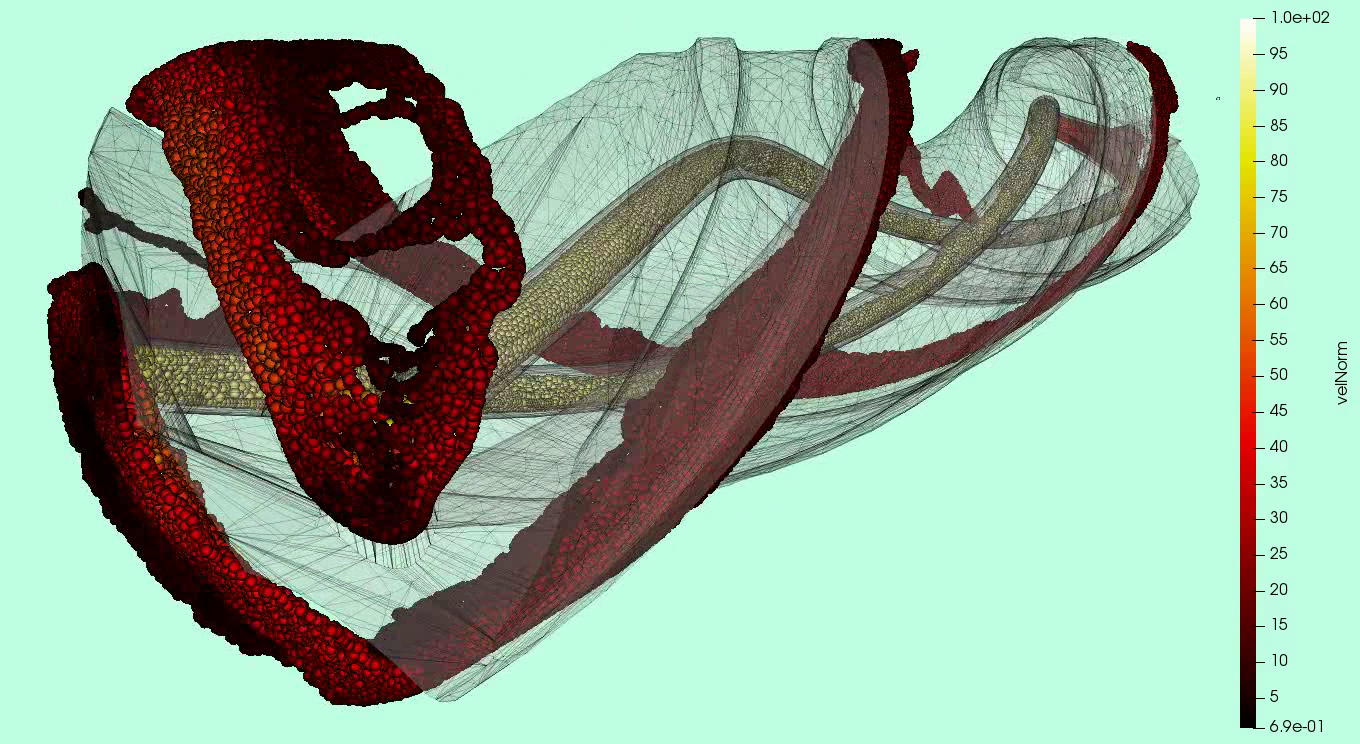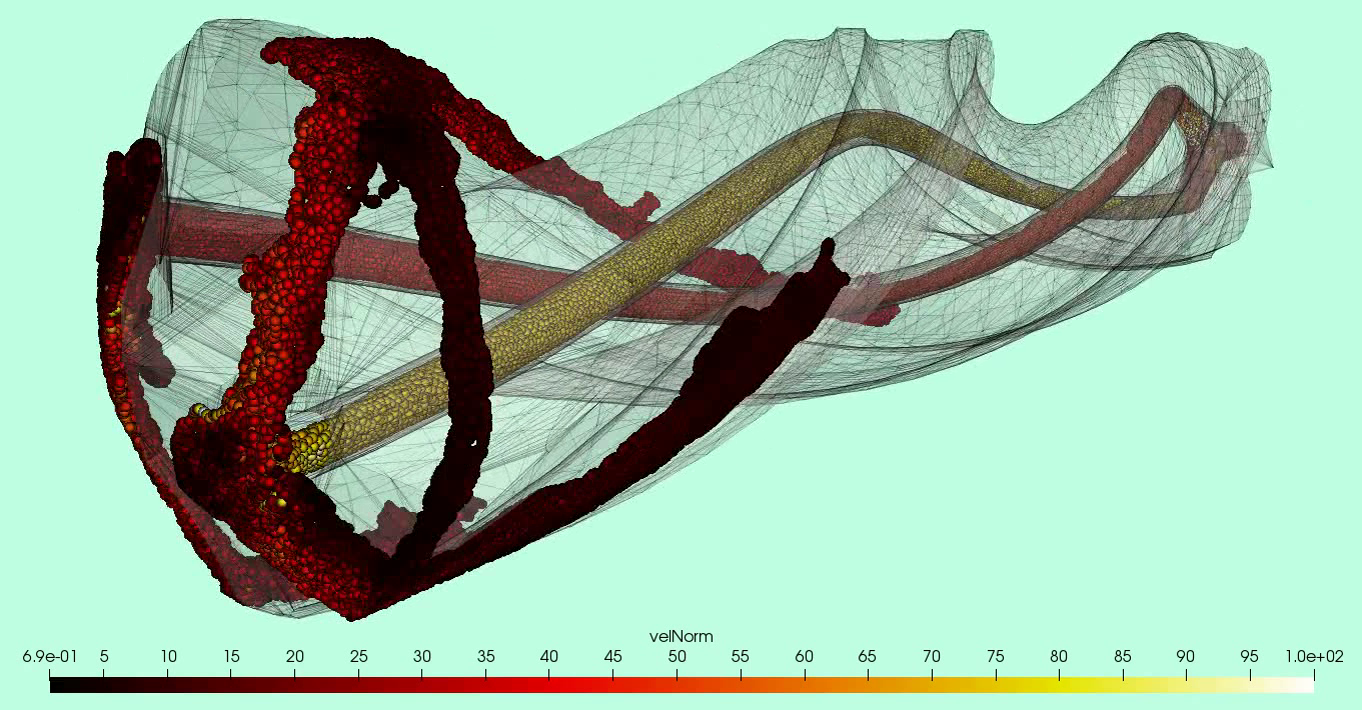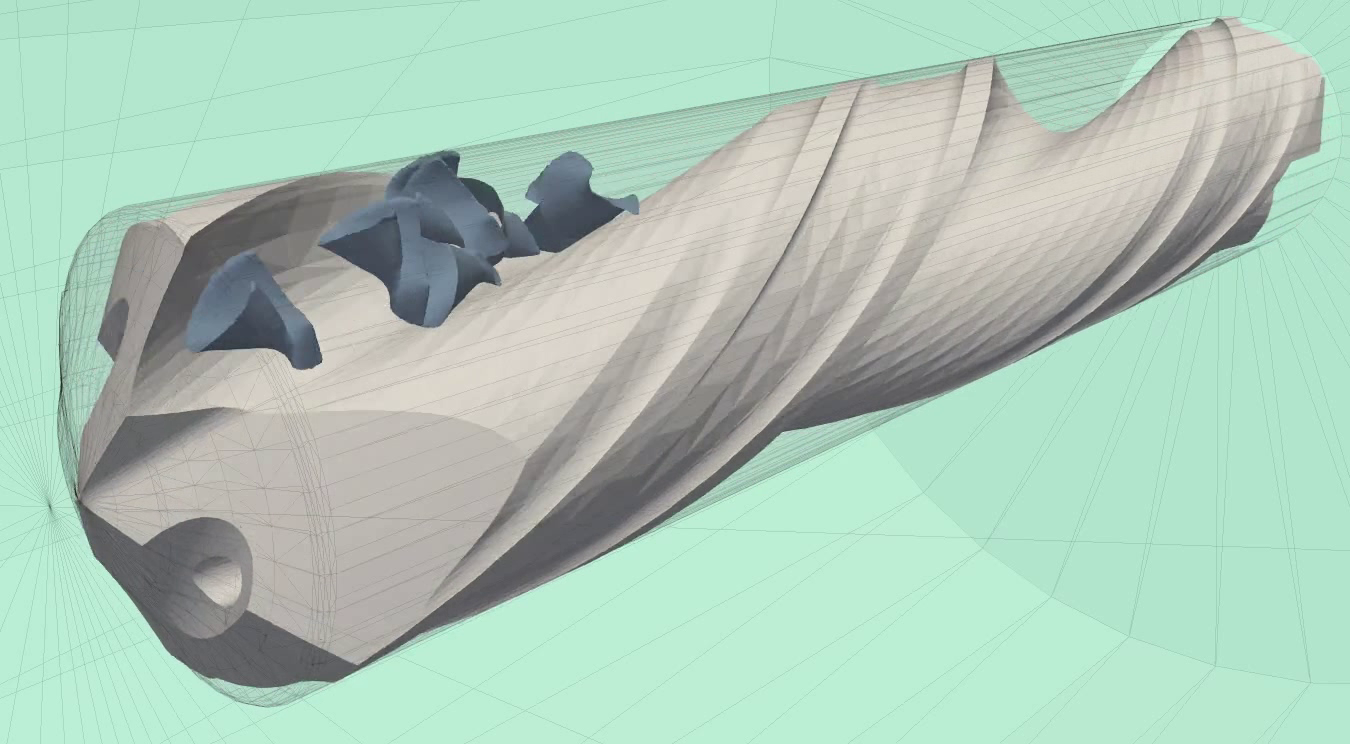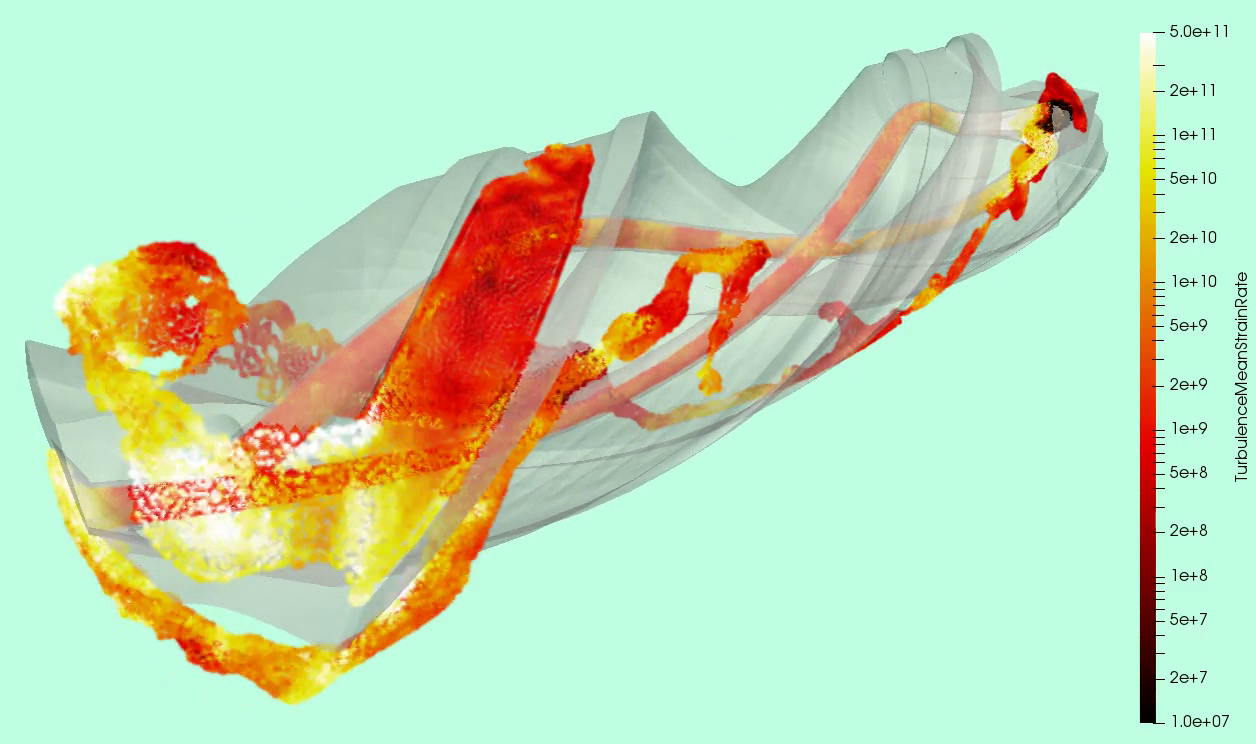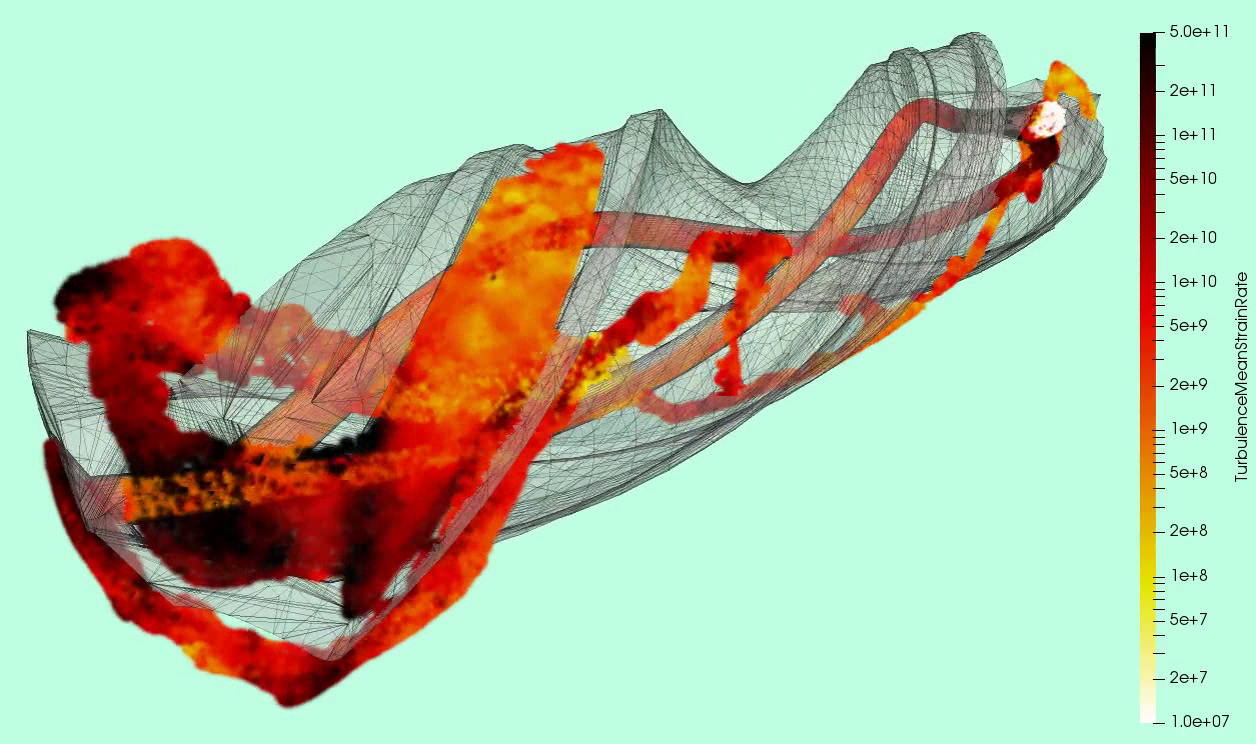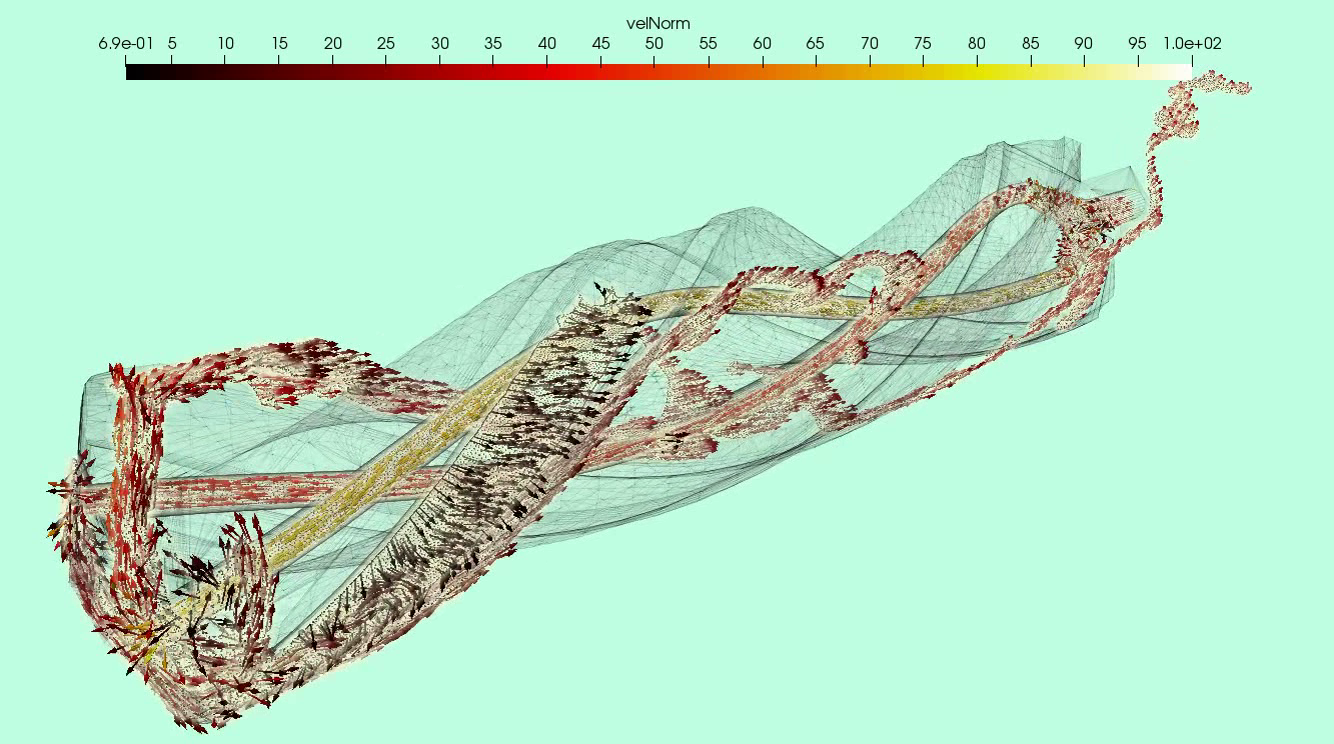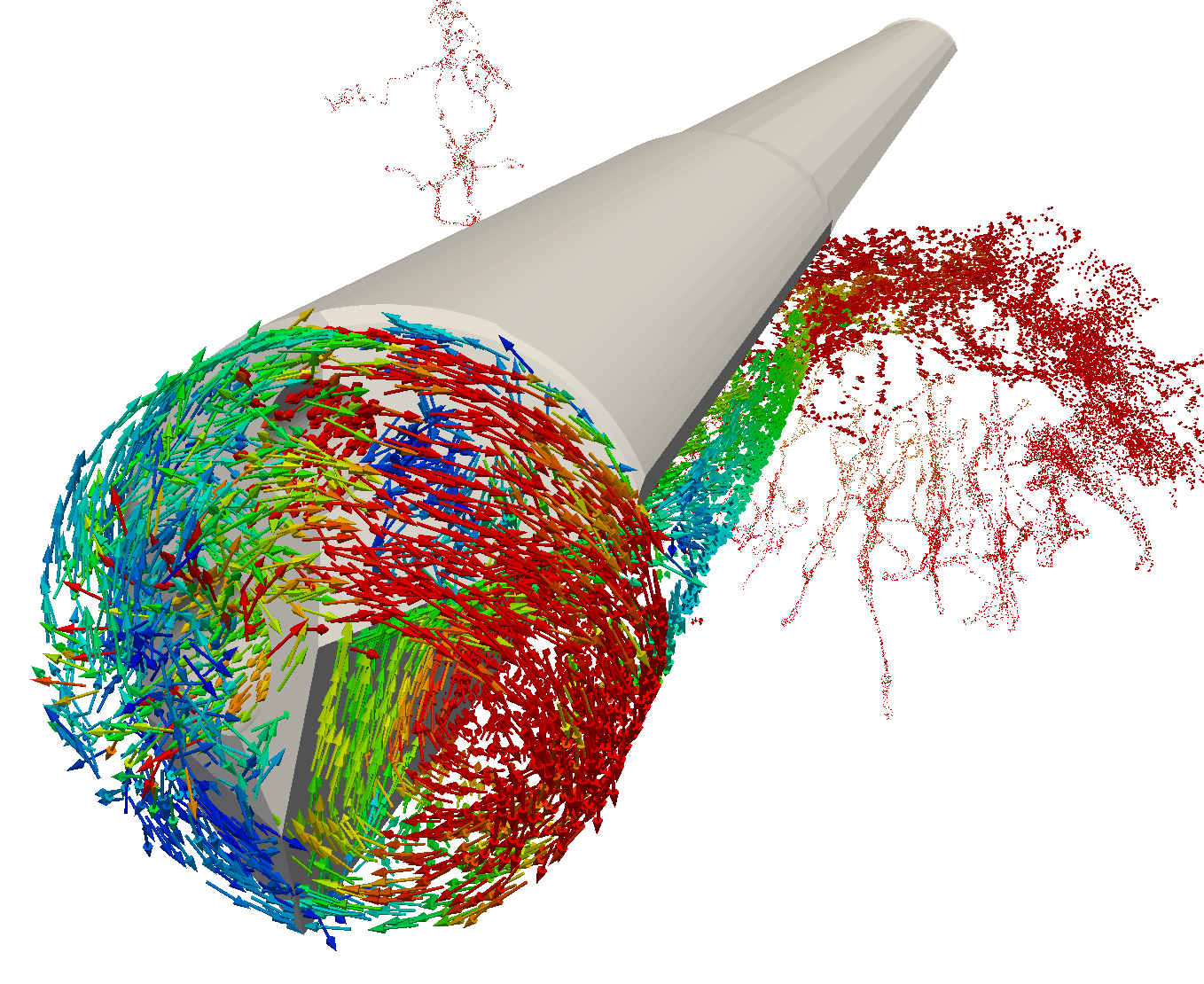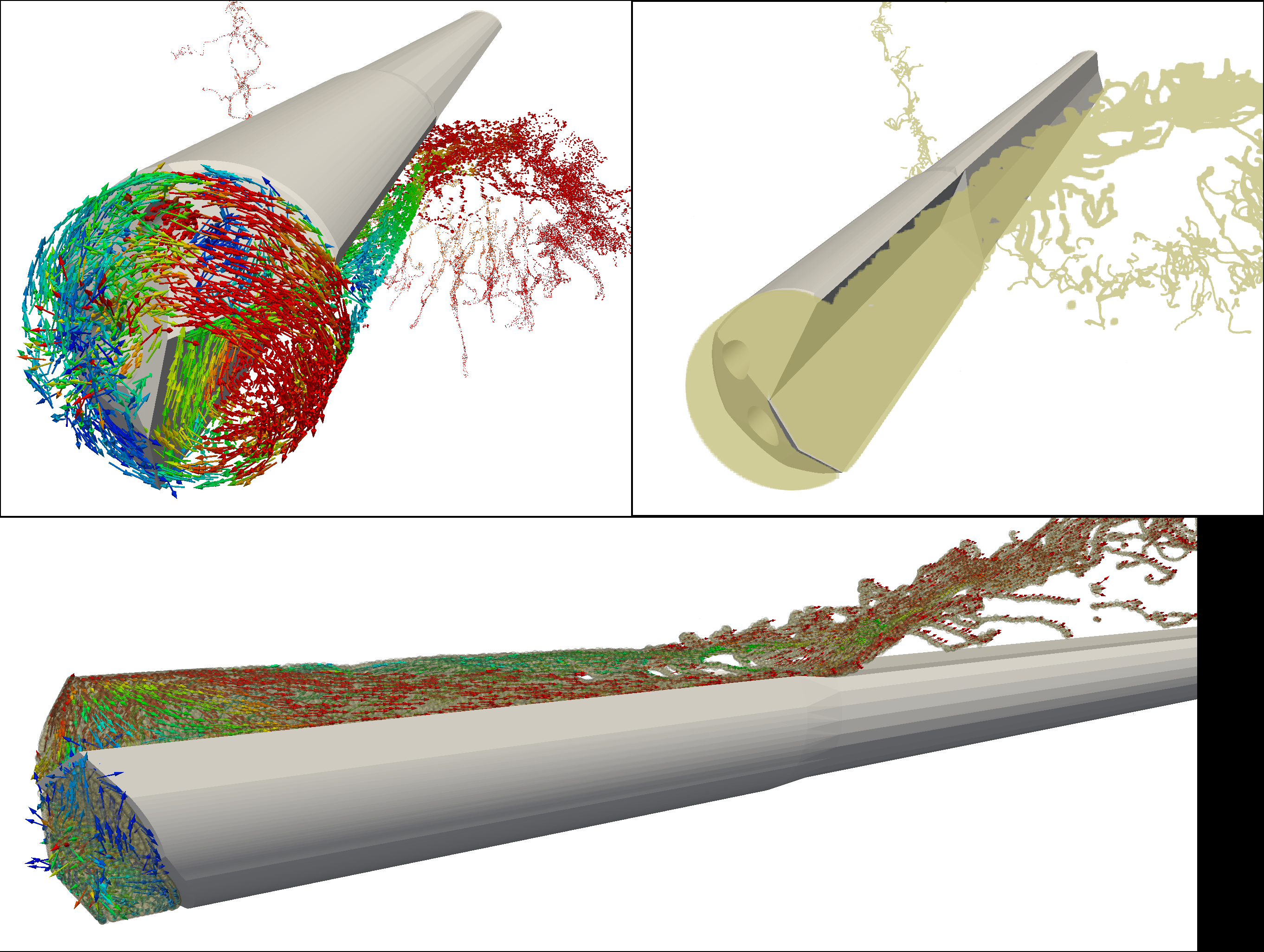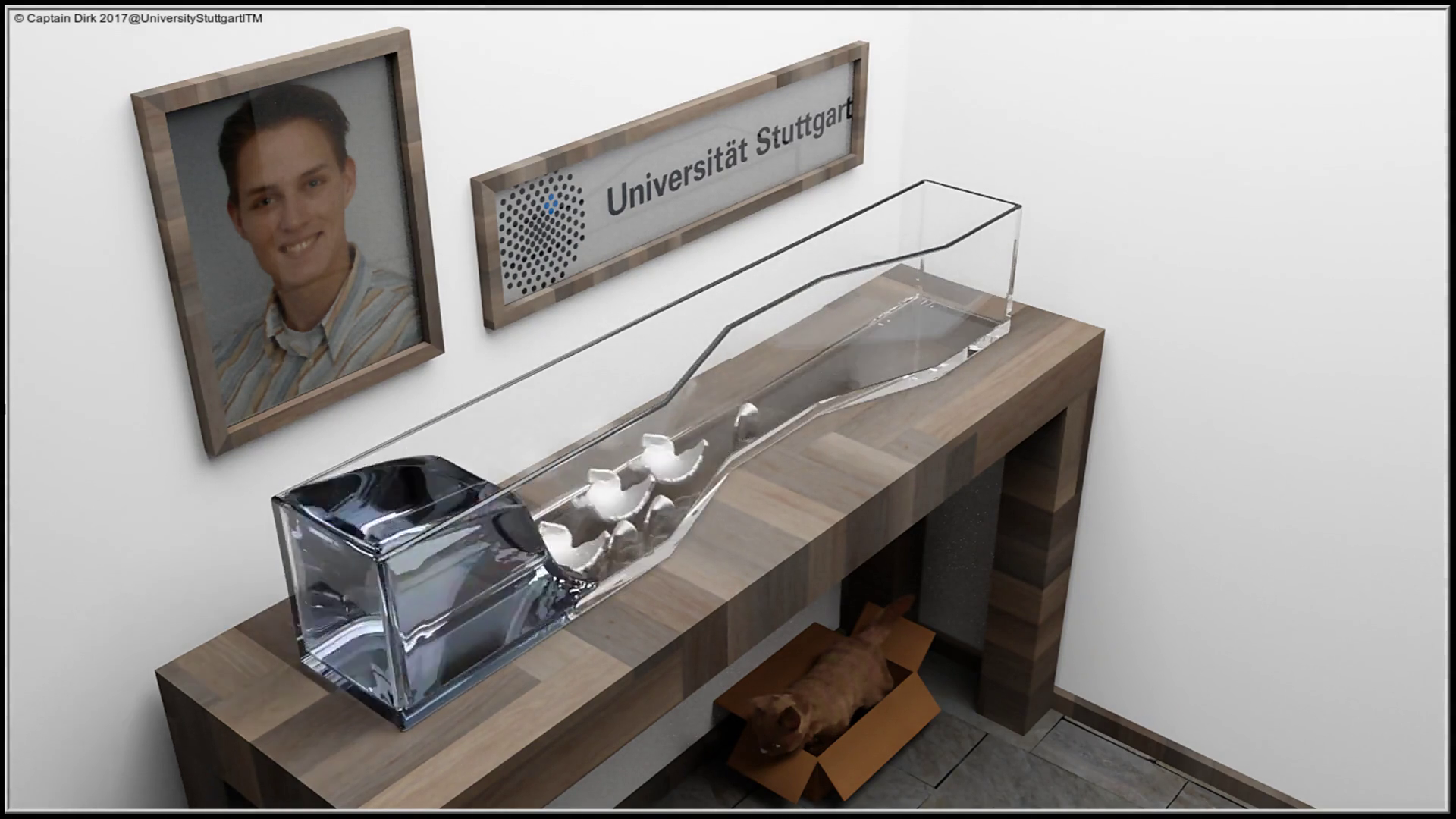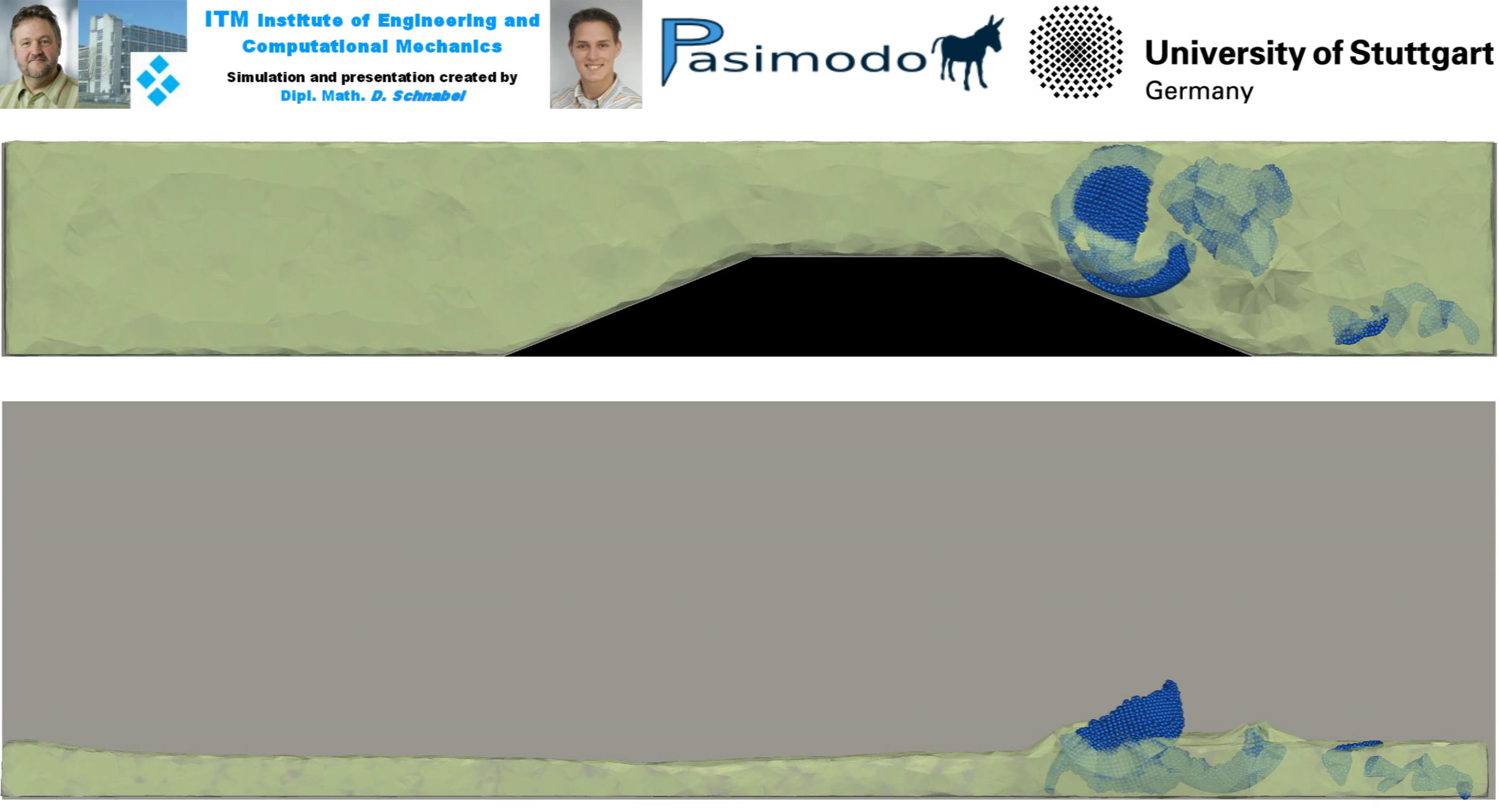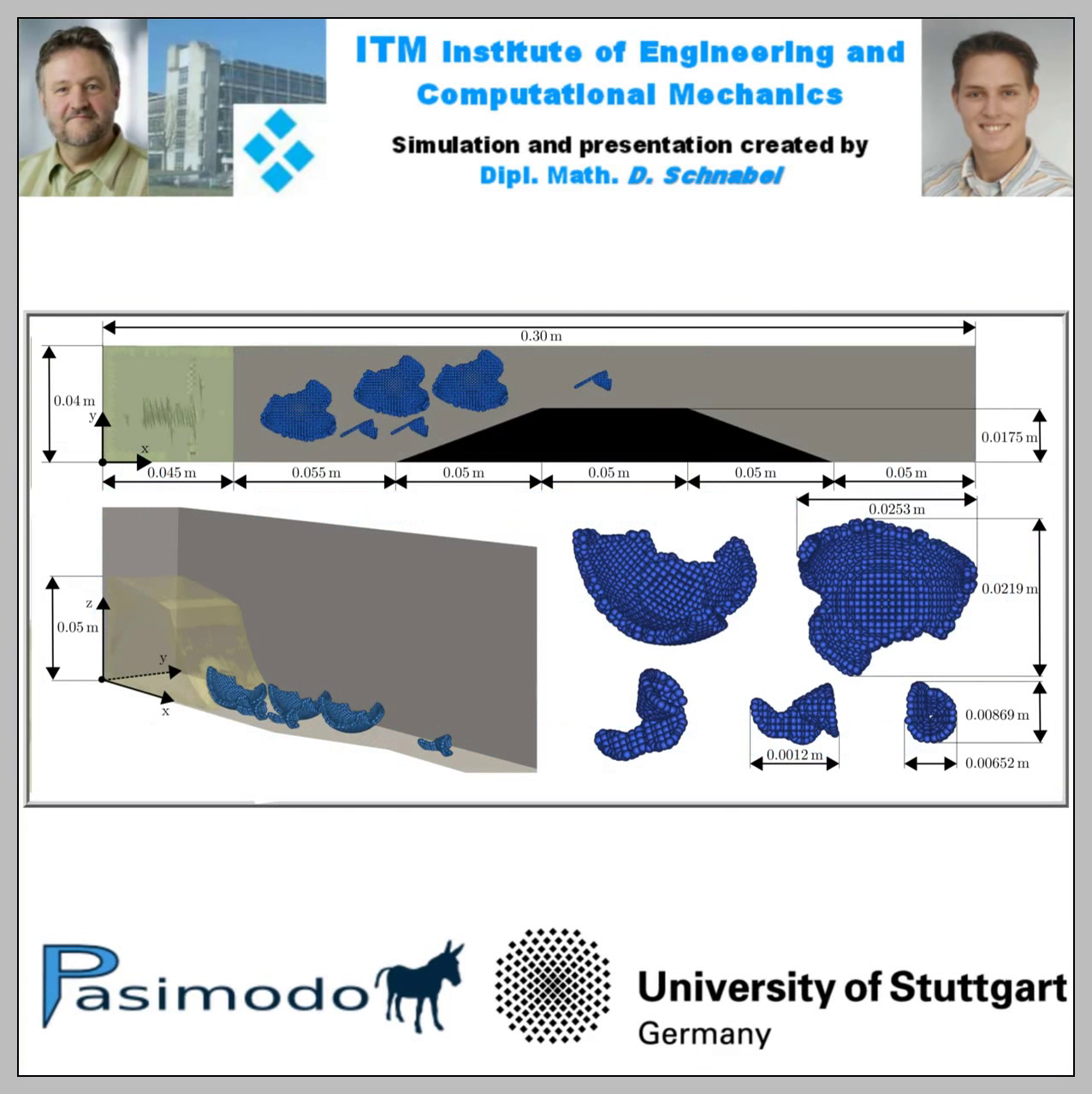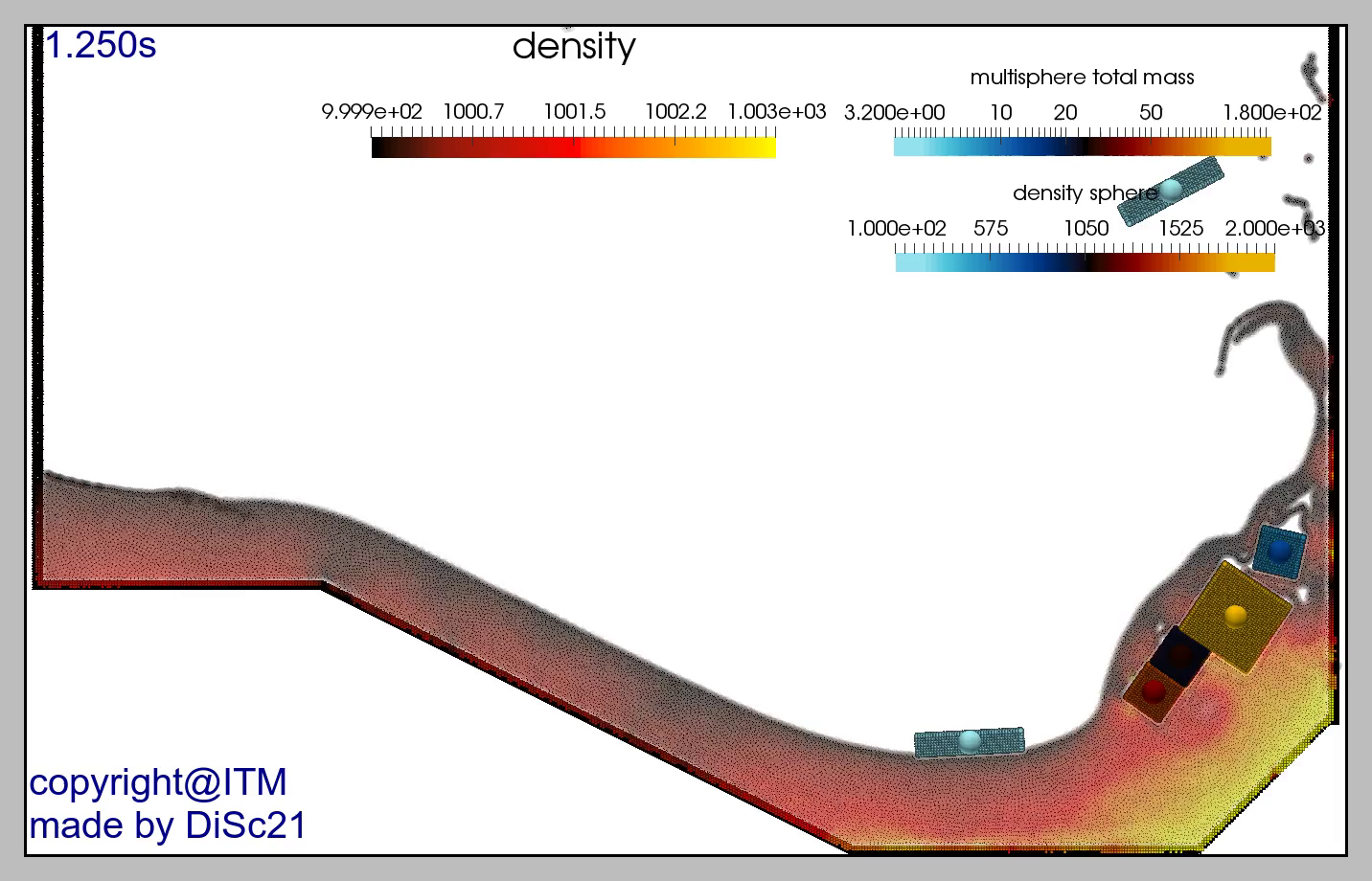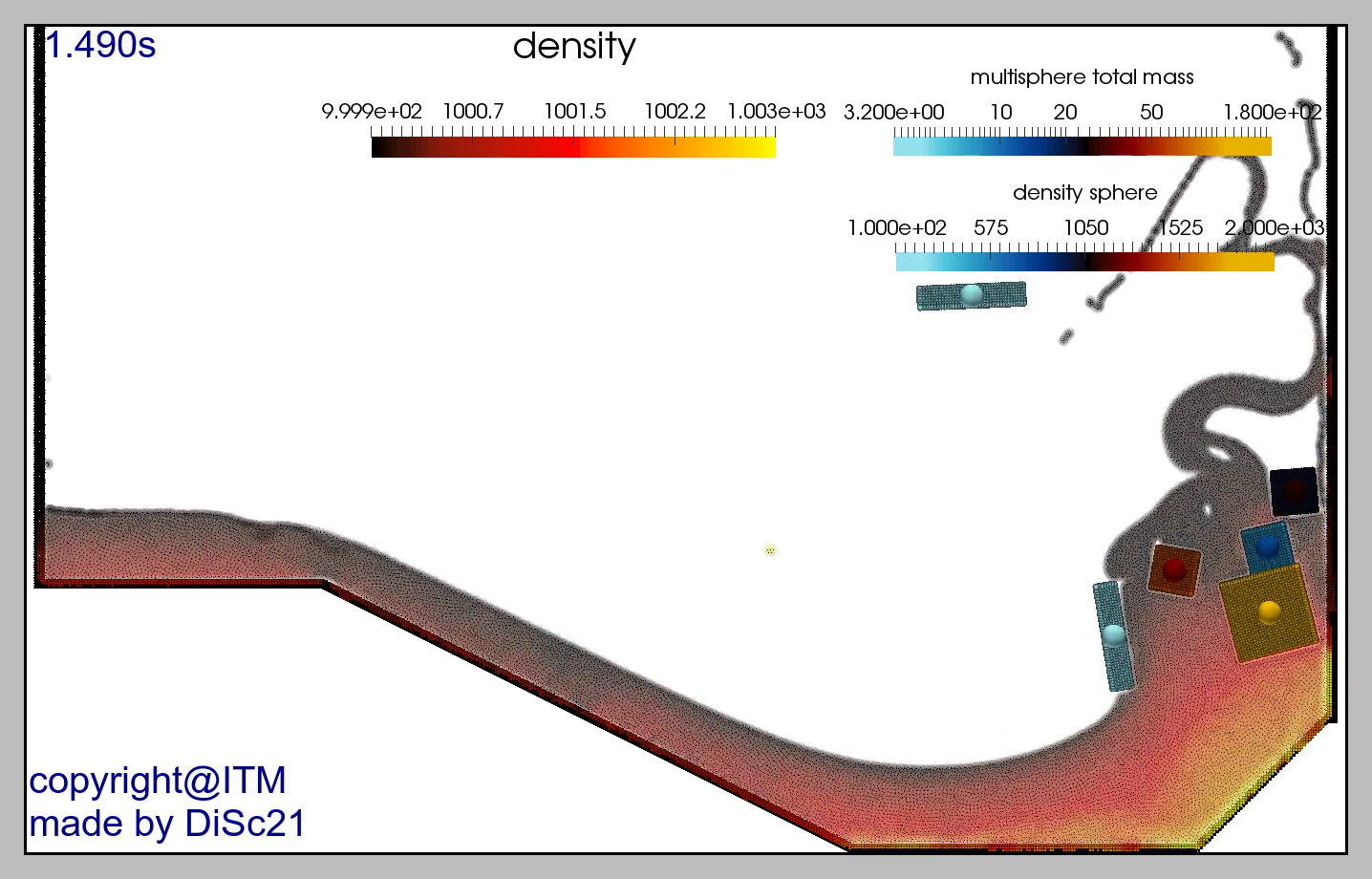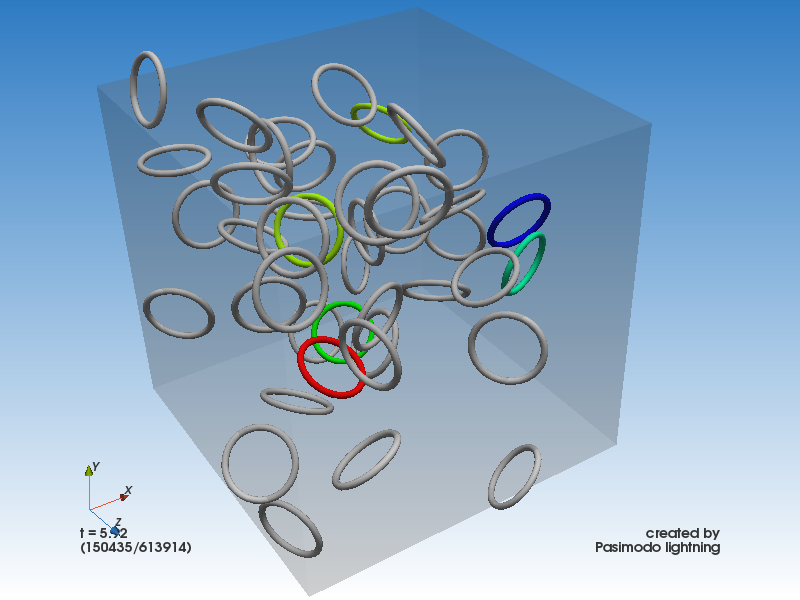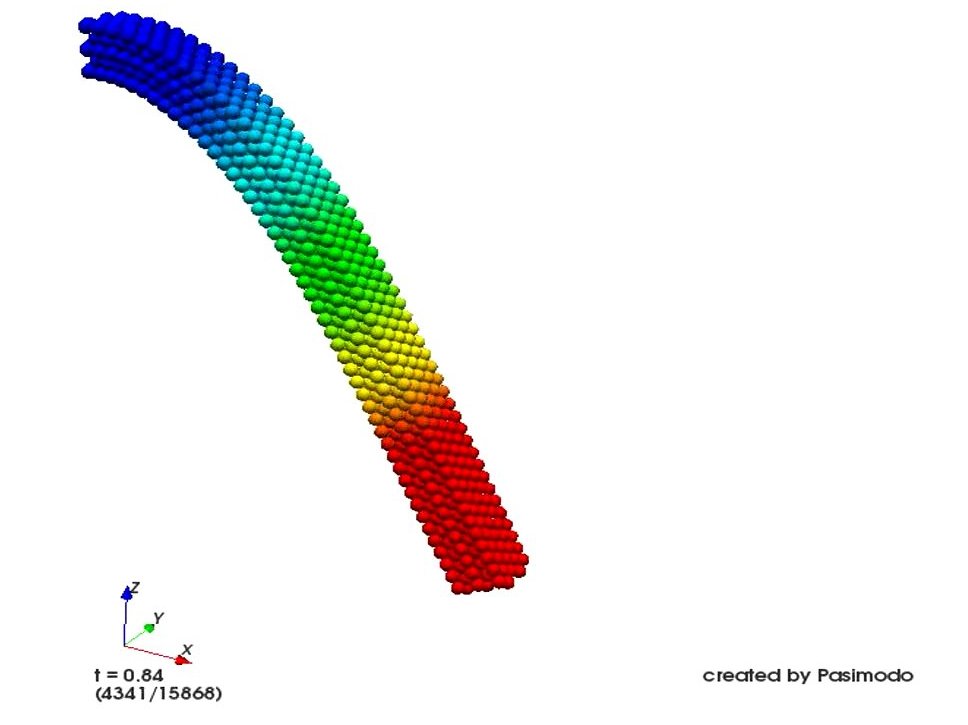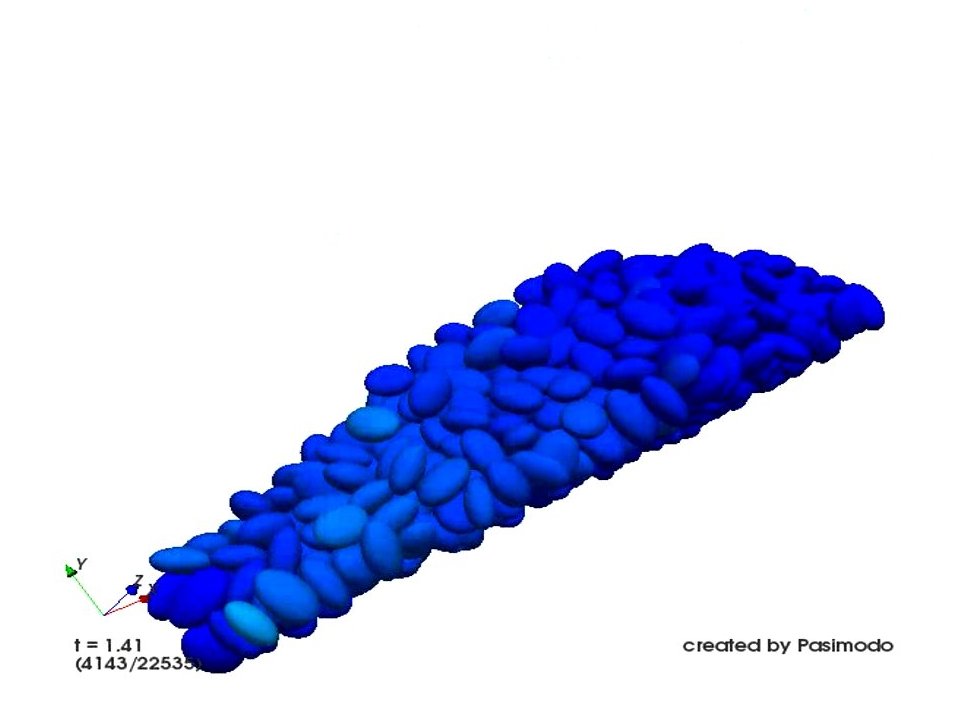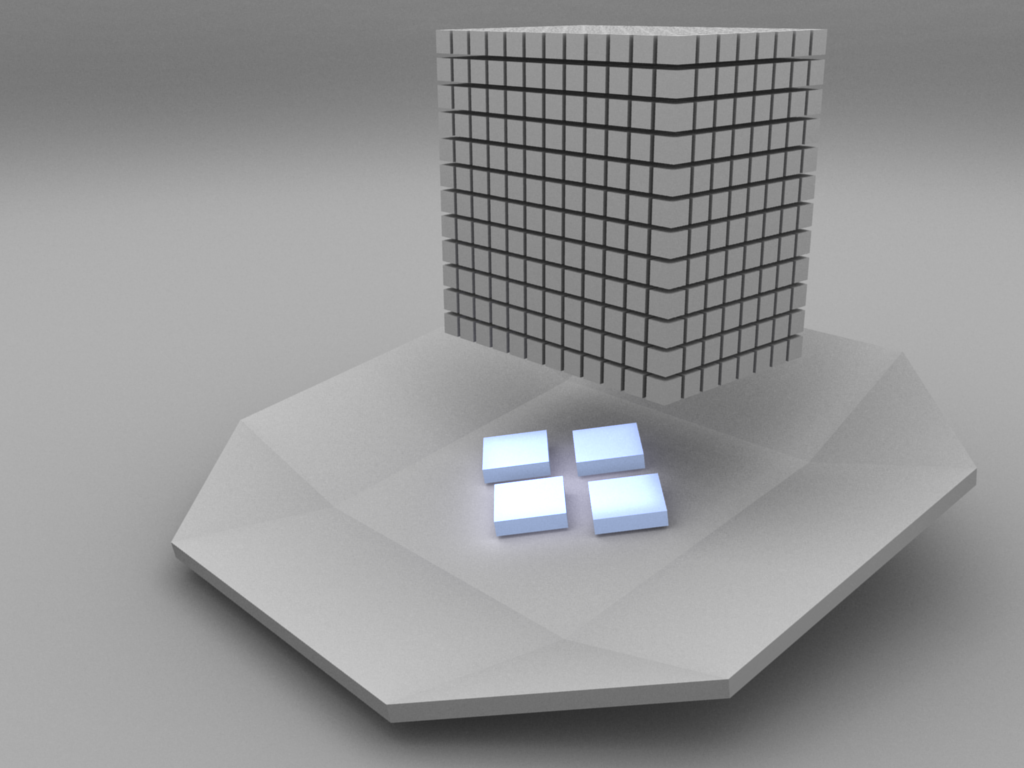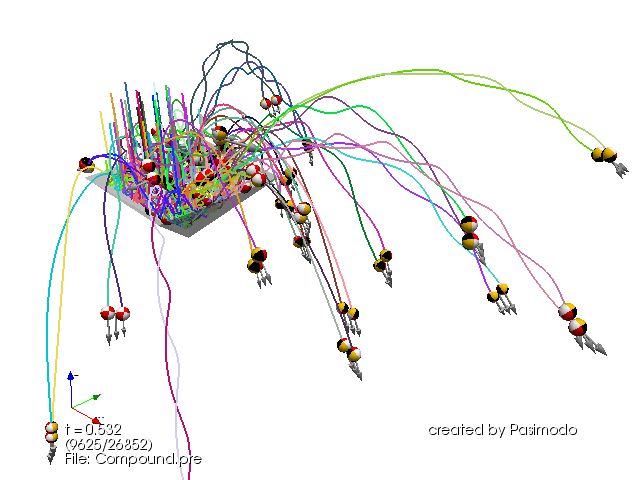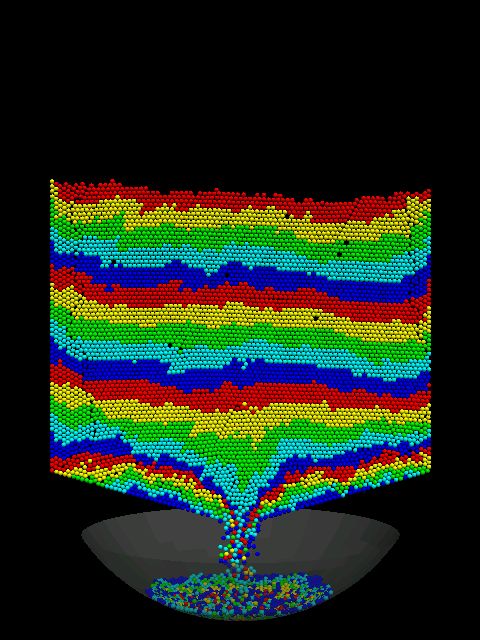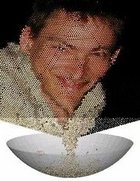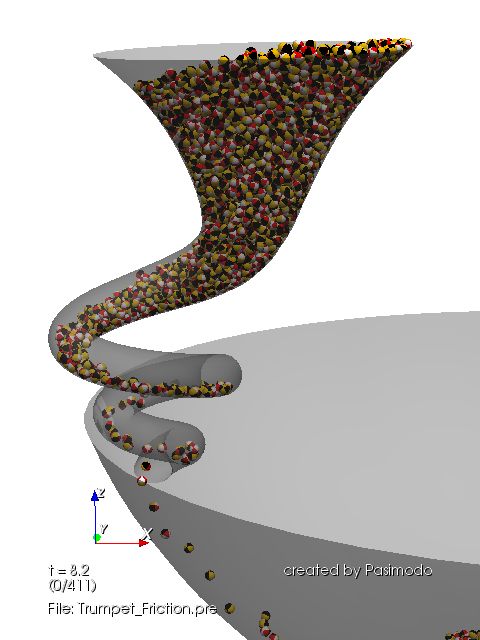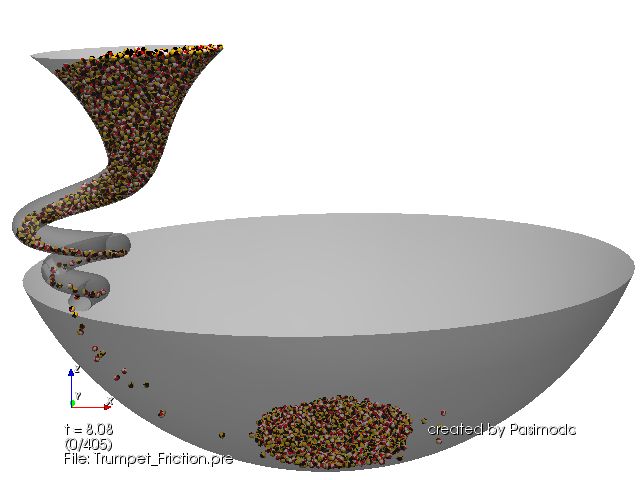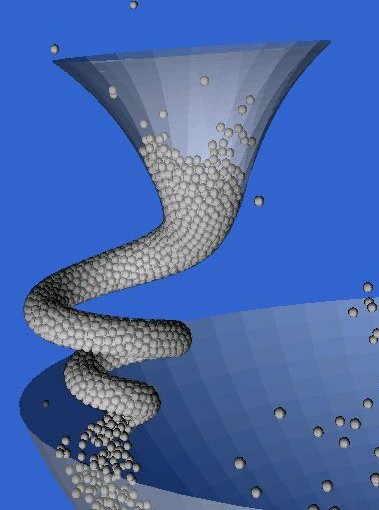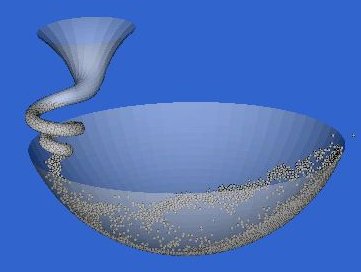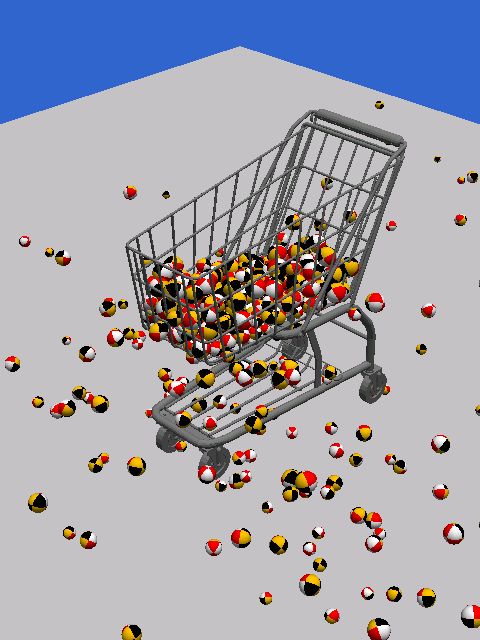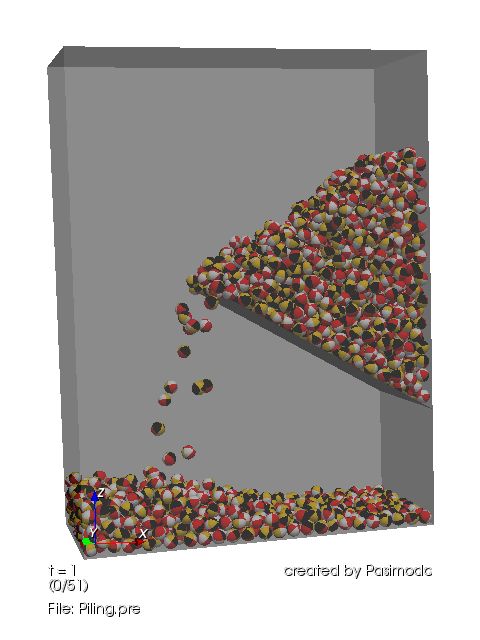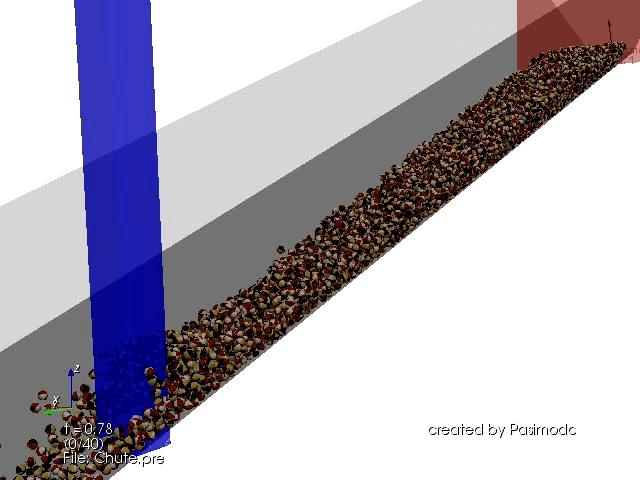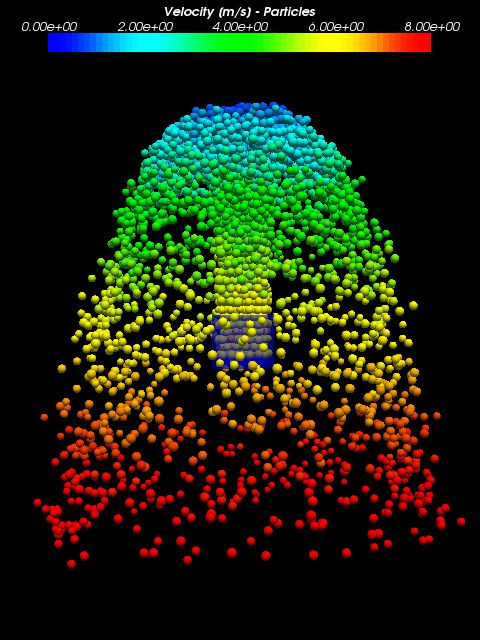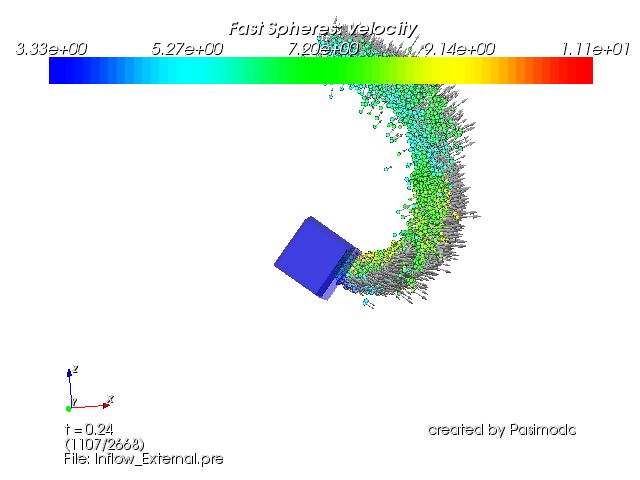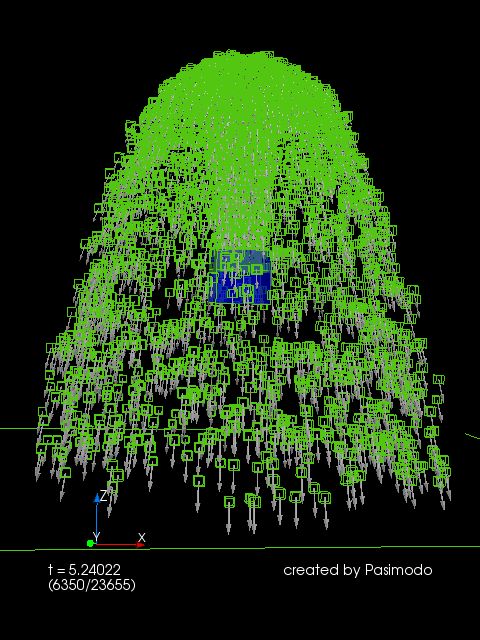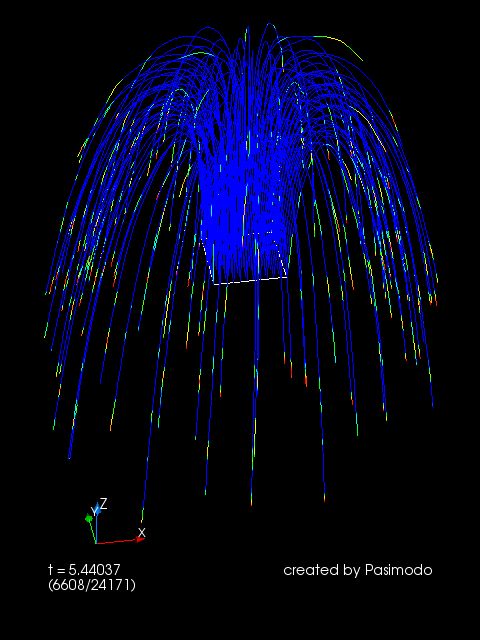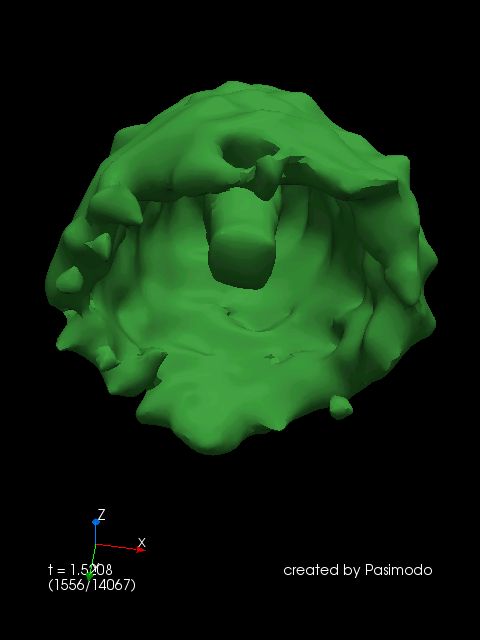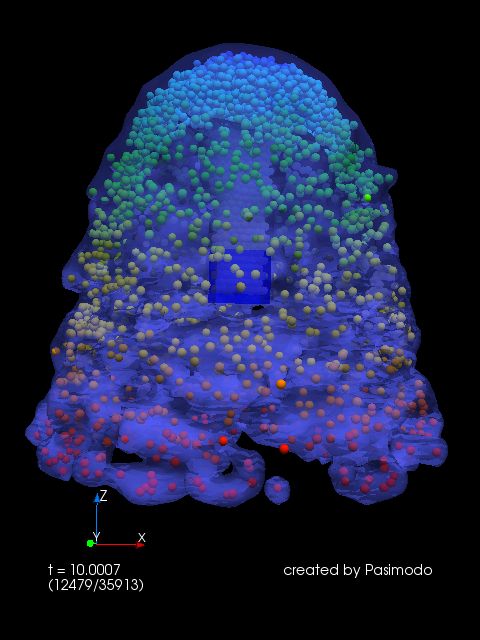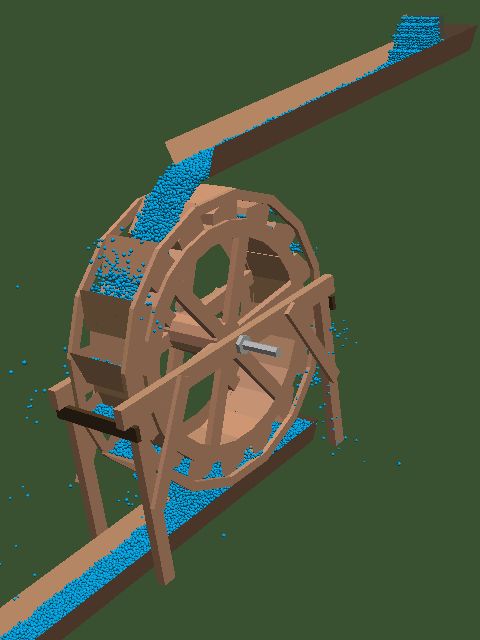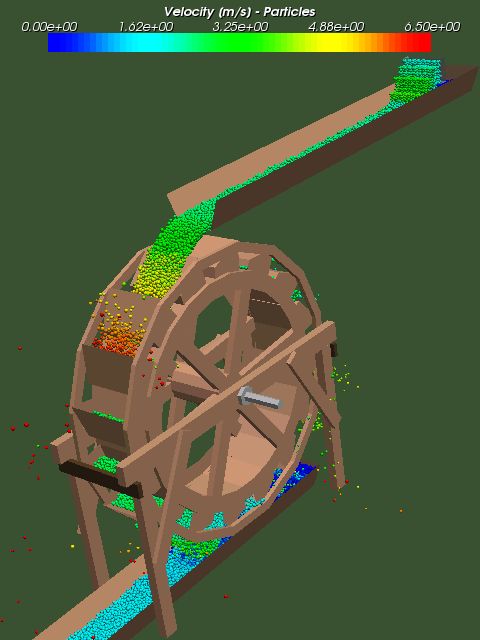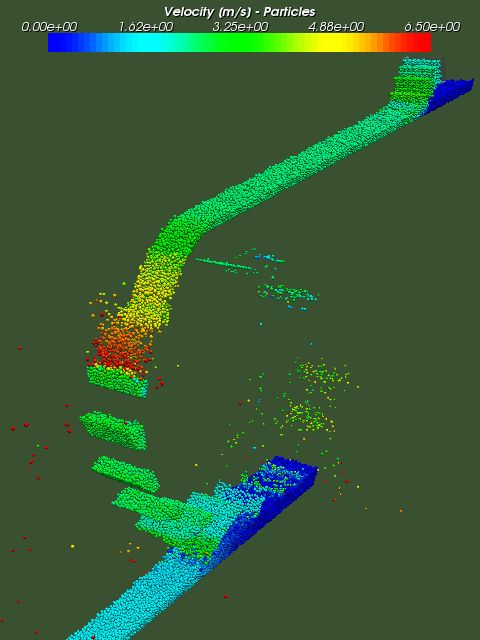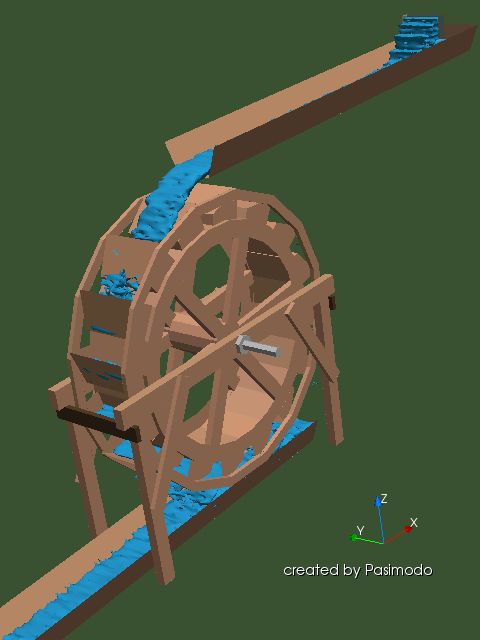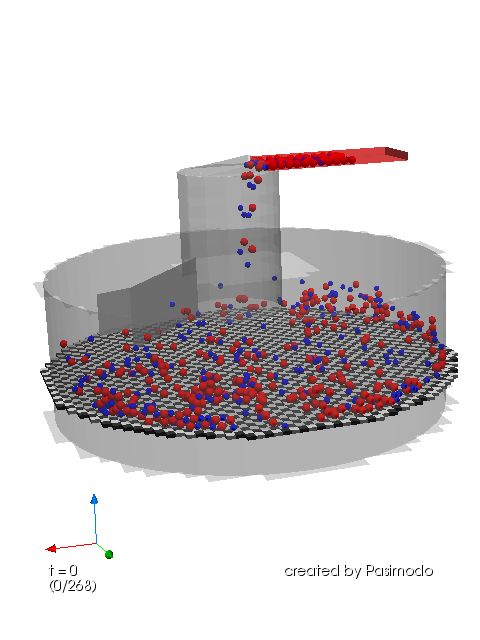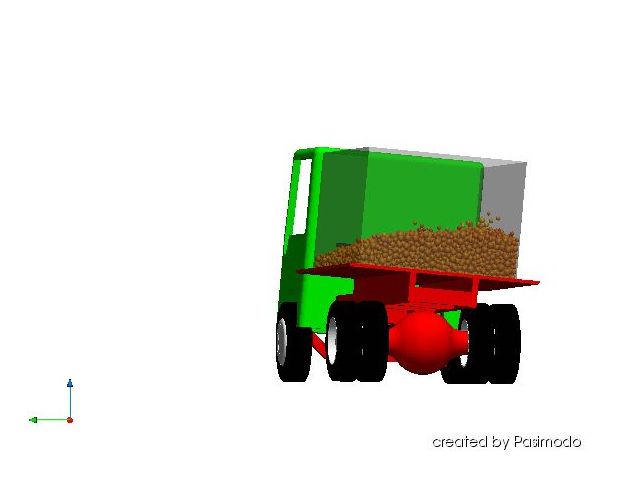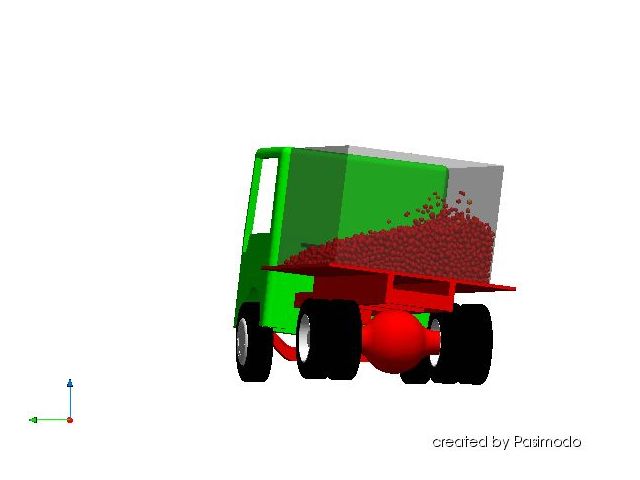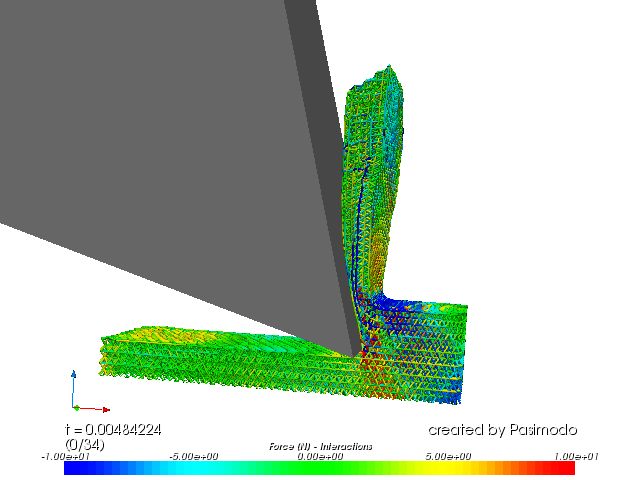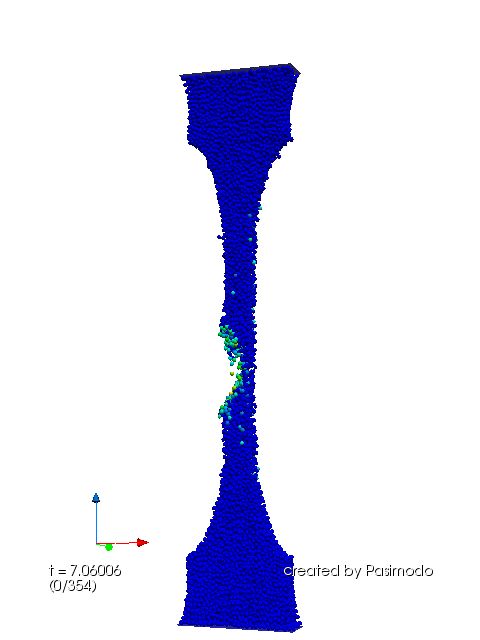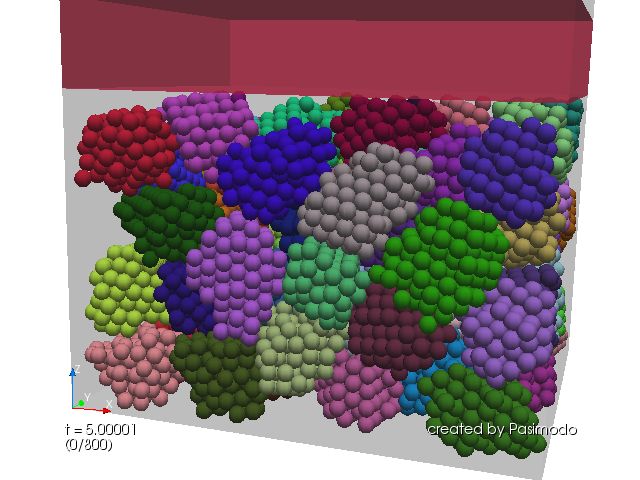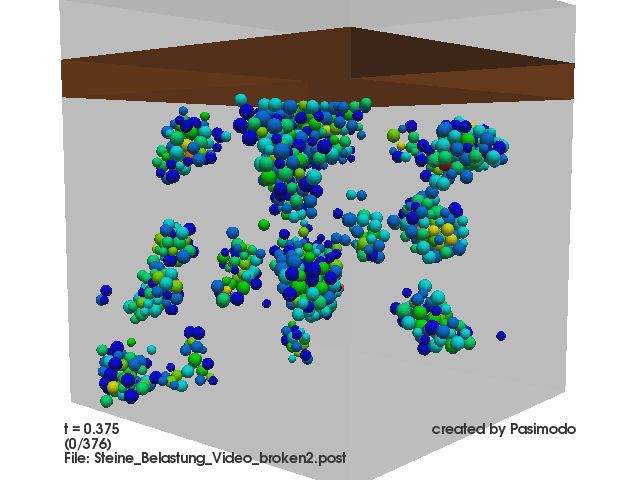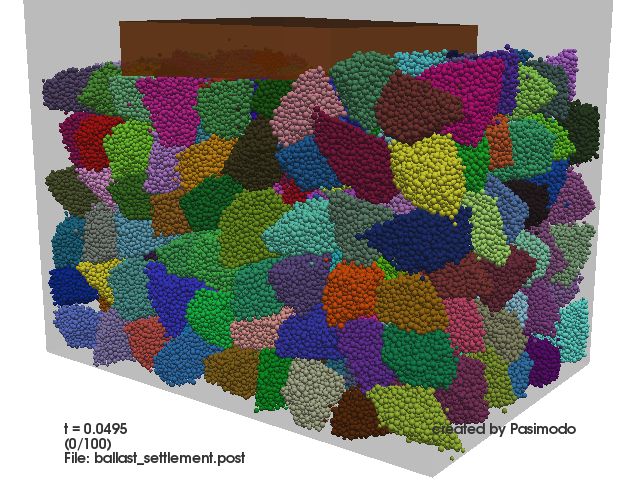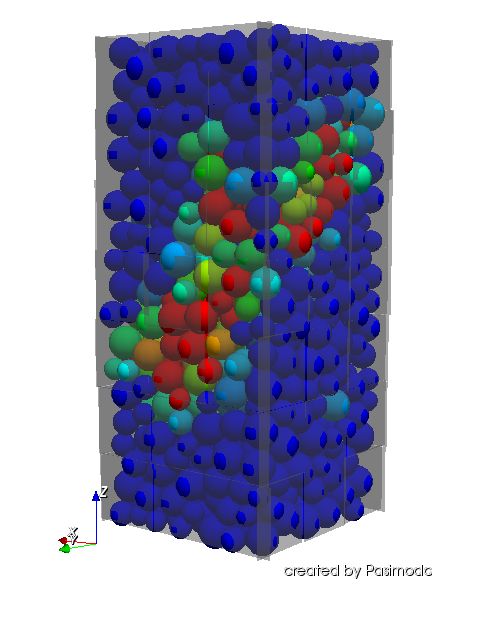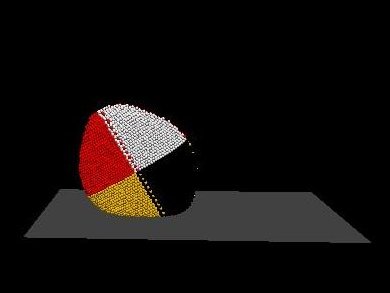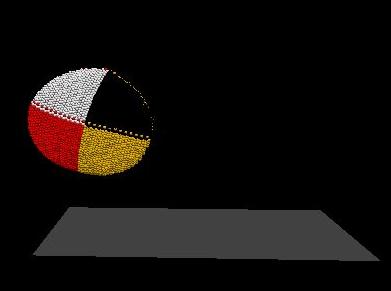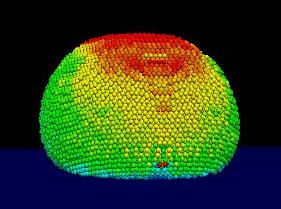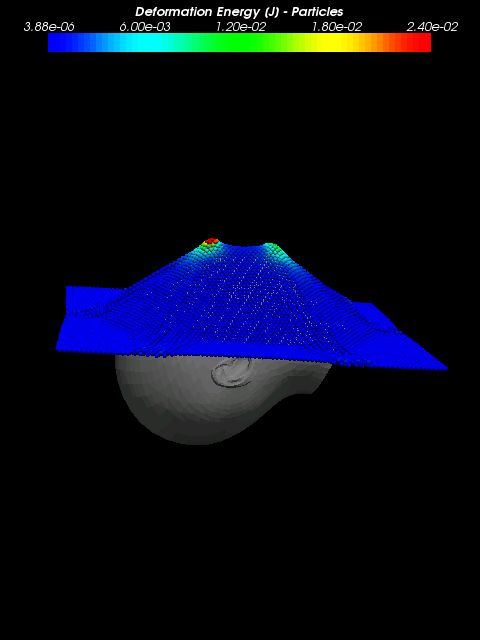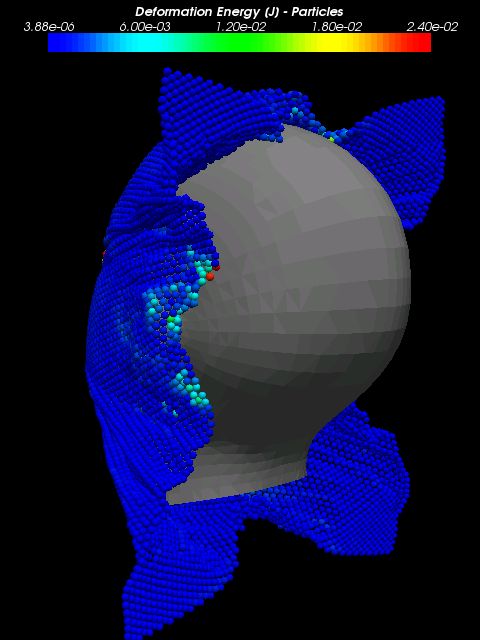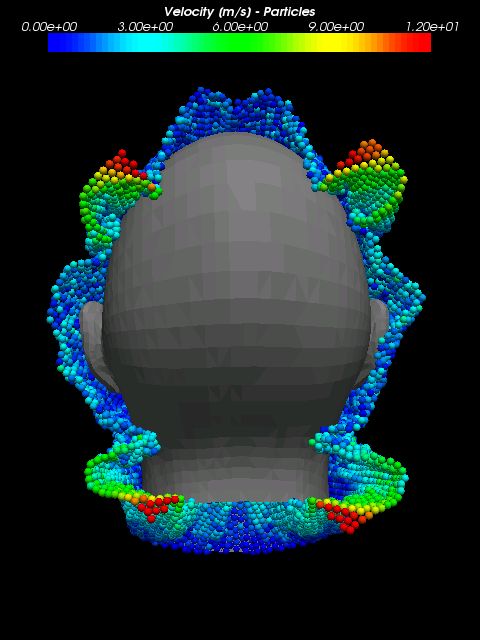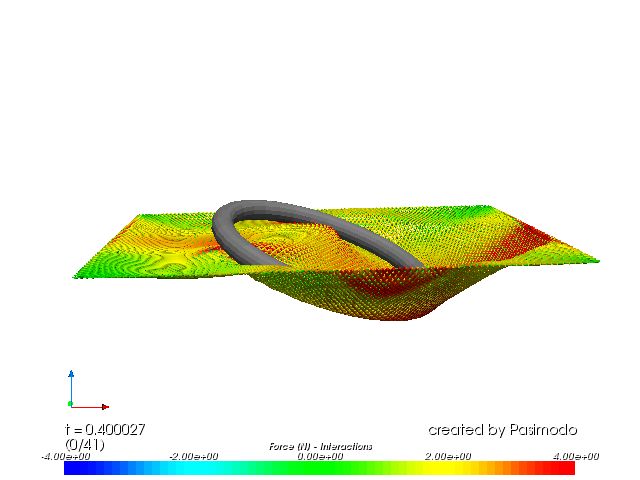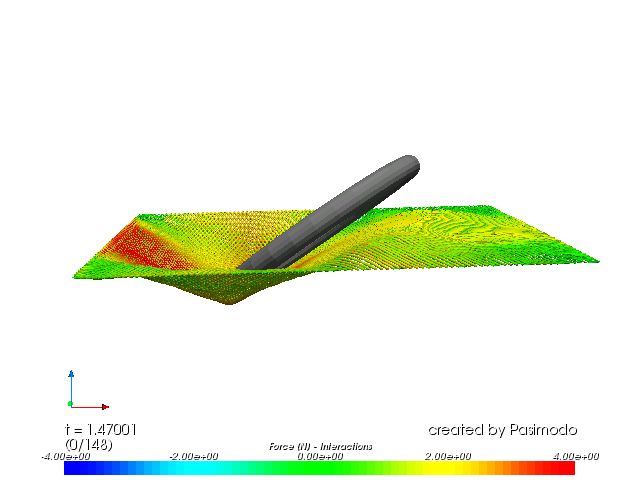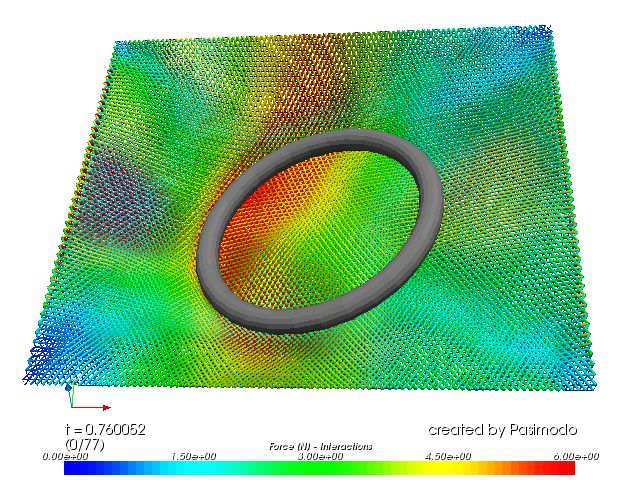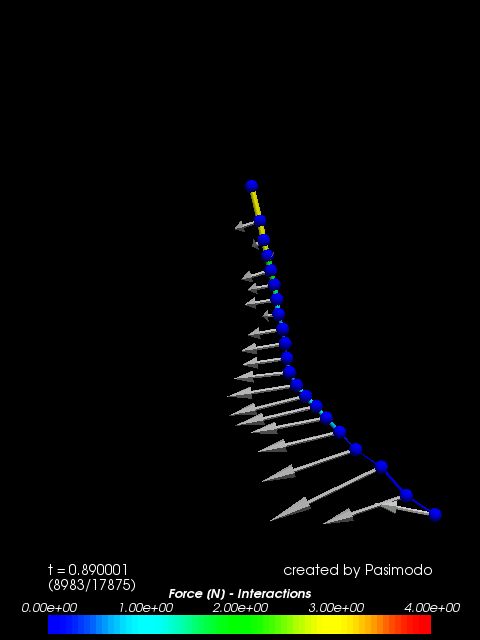 |
|
Project Description
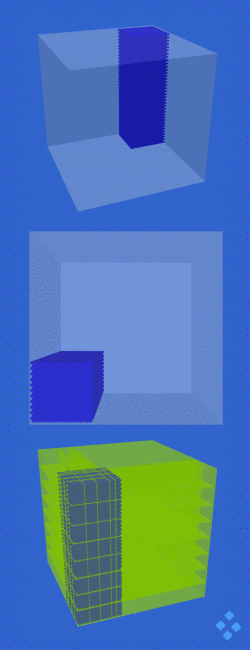
(Stop animation)
For the simulation of granular media, i.e. multi-particle systems, canonical methods such as the Finite Element Method or the Finite Volume Method cannot be used, since the medium to be simulated lacks continuousness. For that reason methods that are not based on meshes are employed, which are based on data structures that completely lack adjacency. The so-called Discrete Element Method (DEM), which is one of these methods, is used to carry out this simulation. The goal of this research is to link the simulation of a multi-particle system and the simulation of a surrounding fluid in order to simulate dispersions. Dispersions are mixtures of solid particles and fluids, i.e. gases and liquids.
As computational fluid dynamics is very CPU-expensive and therefore time-consuming for large scale problems, it is usually carried out as a parallel computation on supercomputers or clusters. During such a computation the simulation domain is divided up into subdomains which are processed by the different nodes in parallel. Therefore it stands to reason to structure the particle simulation in the same manner. So at the beginning the work is focused on developing and implementing an efficient particle simulation program. As the positions of the particles and thus their distribution in the system can change, an adaptive domain subdivision is necessary to follow changes in the structure of the system. This provides for an optimal and even work distribution among the different processors. One flexible approach uses recursive domain subdivision that yields data structures with tree-based topology.
Even though parallelization reduces computation times, its influence on a program's performance is often overestimated compared to optimizing the structure of the program itself: A disadvantageously implemented program can be made to run only twice as fast if it is parallelized on two machines, whereas optimizing the data layout and bundling operations upon them can achieve a reduction of the computation time to less than one tenth of the original run time. To evaluate the effects of these optimization strategies profiling programs are used that provide an insight into the behaviour of the program, especially its use of cache memory. To additionally reduce computation time a mechanism controlling the size of the time steps can be used that allows for the size of these time steps to be varied depending on the state of the system.
The demand for flexibility and extensibility of the simulation program suggests an implementation in C++, thus enabling the application of object oriented structures. Through the use of expression template functions for the numerical calculations a computational efficiency is achieved that can hold its own compared to the efficiency of Fortran77, the language that has dominated numerical applications so far, while at the same time making it a lot easier to read the emerging code.
-
Preliminary SPH-Simulation of the Cooling-Lubricant Supply for Deep-Hole Twist-Drills
(top: different dynamic viscosities and NCP-interaction test, bottom: viscous as water)
-
Developement and Implementation of the SPH-Plugin:
A. Mueller,
D. Schnabel and
C. Gnanasambandham,
Institute of Engineering and Computational Mechanics (ITM), University of Stuttgart
-
Simulation with
Pasimodo
and Visualisation with Paraview:
Dirk Schnabel,
Institute of Engineering and Computational Mechanics (ITM), University of Stuttgart
-
Cooperation with:
Dr.Ing Ekrem Oezkaya,
Institute for Machining Technology (ISF), TU Dortmund
Prof. Dr.Ing Dirk Biermann,
Institute for Machining Technology (ISF), TU Dortmund
-
SPH-Simulation of the Cooling-Lubricant Supply for Single-Lip Deep-Hole Drilling-Processes
(top: fast movies, bottom: slow movies)
-
Developement and Implementation of the SPH-Plugin:
A. Mueller,
D. Schnabel and
C. Gnanasambandham,
Institute of Engineering and Computational Mechanics (ITM), University of Stuttgart
-
Simulation with
Pasimodo
and Visualisation with Paraview:
Dirk Schnabel,
Institute of Engineering and Computational Mechanics (ITM), University of Stuttgart
-
Cooperation with:
Dr.Ing Ekrem Oezkaya,
Institute for Machining Technology (ISF), TU Dortmund
Prof. Dr.Ing Dirk Biermann,
Institute for Machining Technology (ISF), TU Dortmund
Discrete Element Method
Hybrid Discrete Element Method
-
Simulation of an orthogonal cutting process.
Model creation:
Timo
Gaugele,
in the framework of the
DFG Priority Program SPP 1180
-
Simulation of a tensile test with a highly elastic polysiloxane specimen.
Model creation:
Christian
Ergenzinger
-
Ballast made from bonded particles is subjected to different loadings:
1. Cyclic compression.
2. Oedometric compression. (Firstly, all particles are shown in the movie. Subsequently, only those particles are displayed, which are involved in fracture processes.)
3. A sleeper is pressed into a ballast bed.
Model creation:
Christian
Ergenzinger in the framework of the
DFG SFB 716
-
Simulation of a multiaxial copression test with a rock specimem (breakage color
coded).
Model creation:
Celine Geiger (student research project),
Christian
Ergenzinger
-
Oblique rebound of an elastic sphere from a rigid plane.
Model creation:
Florian Fleißner
-
Simulation of a nearly limp membrane falling on an obstacle.
Model creation:
Florian Fleißner
-
Torus falling on a membrane. The membrane consists of bonded spherical particles. Only
the bonds are displayed and color coded with respect to the tensile force in
the bonds.
Model creation:
Florian Fleißner
-
Simulation of a plastic string dangling under gravity.
Model creation:
Timo Gaugele
-
Simulation of wattling with five threads, modelled as beaded spherical
particles. The spheres are bonded by linear-elastic force elements.
Model creation:
Florian Fleißner
Links
Information about the particle
simulation software Pasimodo, which is developed in the framework of this
project.
Contact
|
|



